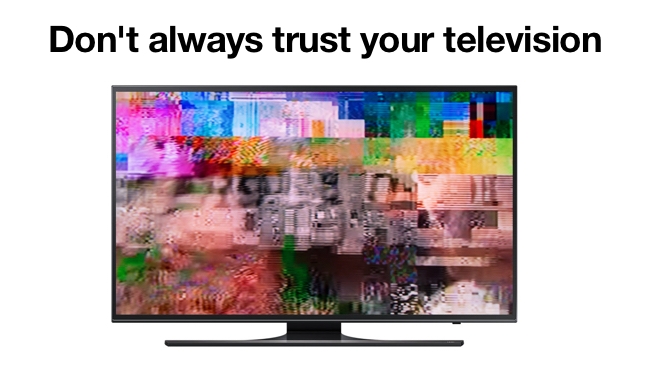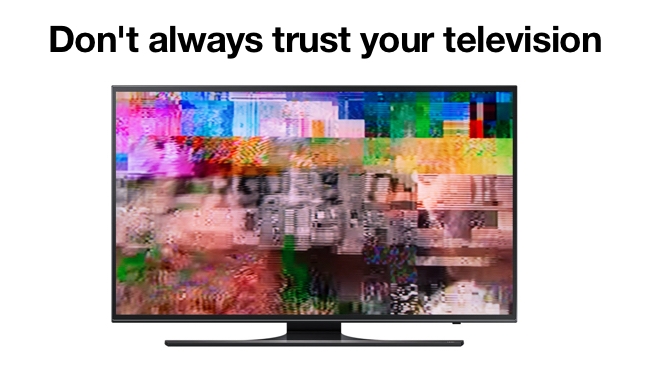
 Don't trust your television
Don't trust your television
Not all televisions are created equal, especially when they have a few miles on the clock.
My friends have a perfectly decent LCD television. It's about six years old and I remember they bought it at the time because it has LED backlighting. It was made by one of the big names.
It seemed a good idea at the time because LED backlit screens were the new thing, and they were supposedly better than the older, fluorescent backlights. Or that's what we thought at the time.
They still have the TV, and I spent most of a recent (wet) weekend watching films on it. And, mostly, they looked terrible.
Obviously, a six year old set isn't going to look as good as a new one - especially given the progress in screen technology. But the thing is that this set actually looks worse than my own vintage model - a Sony Bravia Full HD set from around 2006: nearly ten years old.
What I noticed most on the LED backlit set was that it made everything look like it was made on video. Even if it was shot on film. I'm not just talking here about spotting the difference between films that were shot using film and video: this set made everything look as though it was shot on Digital Betacam.
Now, I don't mean any disrespect to this venerable Sony format, which was very good in its time, and still is, in context. But what you really don't want is your latest feature film masterpiece, carefully and expertly graded, looking like it was shot by the local news channel.
I watched all sorts. Avatar. Prometheus. A curious little indie time travel film called Dimensions. Woman in Gold. They all looked the same. It was awful.
Worse than that - at first sight, the brightness of the screen seemed quite attractive. Until, that is, you realised that whole swathes of colour were missing, along with any degree of subtlety whatsoever.
This was not the only thing.
The set had some kind of motion interpolation. I have no idea what problem this was supposed to solve, but it certainly caused some pretty bad ones itself. At first, I thought I was watching the worst case of rolling shutter I had ever seen, but they I realised that whole chunks of scenery (parts of a leafy tree, for example) were being detached and behaving as if there were in a different scene altogether. Whatever system this was seemed to have enormous difficulty with zooms and vertical pans. It was as if the whole picture had been torn up and pieced together again imperfectly, and without any glue. So the minute there was any movement, it all fell apart again.
All of this made me realise that if we are ever in a position where we have to grade or finish some video material on a monitor or TV of unknown provenance, then we need to be extremely suspicious of the result. It reminds me of when, working in the professional audio business, I mixed some tracks on a pair of loudspeakers that were at first hearing attractively bright. But the problem was that I compensated for this by turning down the high end in the mix. The end result was a very dull-sounding recording when it was heard on any other loudspeakers.
The only real solution to this is to pay a bit extra for a good, calibrated monitor. When I say "pay a bit extra", you'll probably have to pay a lot extra. The alternative is to produce video that looks terrible.
Tags: Technology


Comments